Best practices for short-run book printing in digital
Using digital printing for short-run book production, whether it’s one or 50 or 1,000 copies, has now become the norm. Yet, the comparison with offset persists. Plus, digital printing has its own set of challenges. In this conversation with Dibyajyoti Sarma, Pallippuram Sajith, managing director, Impel Services (Bindwel - Stelda group), sheds light on the challenges surrounding short-run book printing in digital and offers some handy solutions
11 Sep 2025 | By Dibyajyoti Sarma
Dibyajyoti Sarma (DS): Digital has advantages over offset. But the per-copy cost of a book in digital format is significantly higher. Do you envision a future where this cost will come down?
Pallippuram Sajith (PS): Yes, today the per-copy cost of digital looks higher. But look at the hidden costs — warehousing, pulping, overstock. Digital eliminates all of that. As volumes scale and consumable prices ease, you’ll see the per-copy gap shrink. It’s like the early days of mobile phones — premium at first, now indispensable. The same curve is happening with digital print.
DS: You mentioned a common complaint from readers: “The paper feels thinner, and I can see the text from the other side of the page.” This is a common issue in digital printing because of how toner/inkjet inks interact with the paper. Is there a solution?
PS: That’s one of the most common reader complaints. The solution lies in the substrate. Mills now produce digital-optimised opaque book papers. And on the print side, controlling ink laydown — especially in inkjet — makes a big difference. It’s not unsolvable, but it does mean choosing the right paper for the job, not just the cheapest sheet available.
DS: You mentioned the golden rule, “Grain direction must be parallel to the spine.” How do we make this knowledge about grain direction available among the operators on the shopfloor? We have seen even the experienced press operators make such mistakes.
PS: The golden rule never changes: Grain must run parallel to the spine. How do you teach it on the shopfloor? We make it tactile. Every service engineer of our team should know the fold test, and in fact, we often hand out a simple "cane dining mat" during training. Everyone has seen one — it folds beautifully along the grain, and is stiff and unyielding against it. That analogy sticks in memory far better than a PowerPoint slide. This can be extended to machine operators. Plus, we would advise putting posters and stamps right on pallets so there’s no excuse.
DS: You mentioned the importance of the moisture/humidity of the paper during the printing process. Can you share a couple of troubleshooting tips that can benefit a boutique print firm...
PS: My advice to inkjet digital printers is very practical. Don’t tear the stretch-wrap or the brown paper wrap off a roll and rush it to the press. Let the paper acclimatise — minimum 12 hours in the print hall. Keep the RH in the room between 40 and 55%. (There are printing machines that are demanding higher RH to have a smooth functioning, which is a challenge.) And get yourself a hygrometer and a moisture meter— they cost less than a reprint job. In India, the difference between the pressroom and bindery humidity is often the silent killer of quality.
DS: Loose spine due to the lack of proper adhesion seems to be a major issue, especially with smaller- and mid-size book printers. What are the best practices to follow in such a scenario?
PS: A loose spine leads to the book falling apart in the hands of the reader. It’s a publisher's nightmare, and it usually points back to adhesive or spine prep. Three rules: prep the spine well, choose the right glue, and run it at the right temp. EVA is fine for novels and textbooks. PO (polyolefin) is the next step up — it runs on standard perfect binders, flows better, and is closer in performance to PUR. And then of course PUR — the gold standard — will even hold coated and synthetic stocks, and compensate for wrong grain direction. But it does need a dedicated applicator system.
DS: Covers are an integral part of binding. What is the ideal cover paper/grammage/lamination you would recommend for better binding? Is there a ratio between the size of the books and the grammage of the cover?
PS: Think of the cover as the book’s handshake. Go too flimsy, and the whole book feels weak. We usually recommend 220- to 300-gsm mill-coated boards. Laminate is essential — gloss for vibrancy, matte for elegance, but make sure your creasing is sharp to avoid cracks or silvering. The ratio is simple: the thicker the block, the sturdier the cover. Don’t put a raincoat on a sumo wrestler, or make a toddler wear a heavy leather jacket.
DS: In offset, books are printed in blocks and are section-sewn. In digital (to be precise, in most books nowadays), instead of section-sewing, individual pages are gathered together and glued to the spine of the cover (perfect-binding). Is section-sewing ideal for a study binding? Can you tell us the advantages and disadvantages of perfect-binding?
PS: In the world of softcover books, thread-sewing often feels like over-engineering. It’s a great heritage technology, but the truth is: in digital, you rarely get folded signatures to make sewing viable in the first place. Most digital jobs are loose sheets or cut blocks. Forcing them into thread-sewn production would add cost and complexity without real benefit for 90% of books.
Modern adhesives have changed the game. With polyolefin (PO) and PUR, you get binding strength that rivals sewing, with flexibility and durability that meet the demands of heavy use — even textbooks and reference works. The beauty of PO is that it runs on standard perfect binders without special tanks, while PUR is unbeatable on coated or synthetic stocks, or where grain direction goes wrong.
So, for digital, the conversation is not ‘sewing vs glue.’ It’s really about choosing the right adhesive. And in most cases, PO or PUR binding gives you a robust, cost-efficient solution.
DS: On average, publishers/ print buyers seem to be more concerned about the print quality of the book and the cover than the binding process. Do you have a checklist for publishers/ print buyers that they should follow/ask the printer before going ahead with the job order?
PS: Publishers are always focused on print quality, but binding decides whether the book survives the second read. I’d urge them to ask five questions before approving a job: Has the printer checked grain? Which adhesive is being used? What about cover stock and lamination? What’s the RH in the shopfloor? And have pagination and spine width been pre-verified? That small checklist saves so much heartache.
DS: On average, we have noticed that Indian printers, big and small, can make a decent paperback/perfect-bound book. But most printers are still not equipped to produce good hardcover books. Is our assessment correct?
PS: Your assessment is correct. Most Indian printers, even the big ones, are comfortable with perfect binding. Hardcover is still specialised — it requires case-making lines, book-block making, board-handling, and cloth-laminating. Many don’t invest in that. But exporters are pushing the bar up, and firms using lines from GP2 - Schmedt are showing that hardcover is very much possible in India. Bindwel is also planning to launch a slew of short-run hardcover solutions.
DS: Follow-up question: Yet, we have noticed that Indian publishing, especially regional language publishing, prefers hardcover books. Is there a way to make hardcover books more accessible and cost-effective?
PS: Not so sure of this, as far as short-run digital print is concerned. Currently, Repro is the only short-run player who is offering hardcover.
DS: Matt or gloss lamination — which do you prefer and why?
PS: Both have their place. Matte is premium, non-reflective, elegant — but can scuff easily. Gloss is vibrant, protective, and cost-effective — but it can glare. Many publishers today choose soft-touch matte films — they feel like luxury, and they last longer. For me, it depends entirely on the story the book is trying to tell. In toner-based printing of a cover, one already faces some challenges; they can only be thermal laminated, and the film, the temperature, the speed and pressure play a role in bringing out a beautiful cover.
DS: Last but not least, please clarify the nomenclature — POD and short-run? POD, we assume, can be a minimum of one copy. What is the minimum run length to qualify as a short-run?
PS: There’s always confusion here. POD — print on demand — can literally mean one copy. Short-run is anything from 50 to 1,000 copies, where offset is inefficient and digital shines. Beyond that, offset wins again on cost. So, POD is about ‘units of one,’ short-run is about ‘small purposeful batches. Both are digital print’s playground.


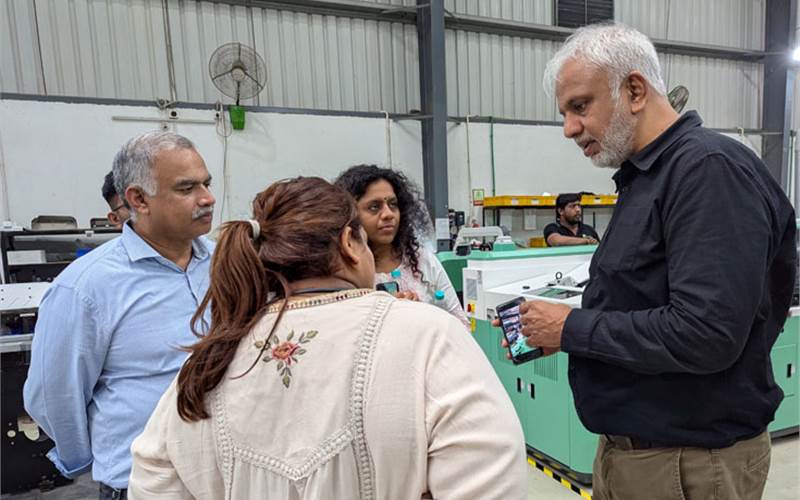





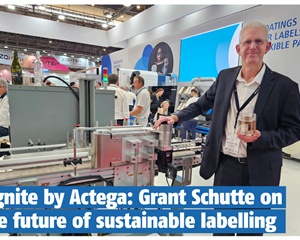
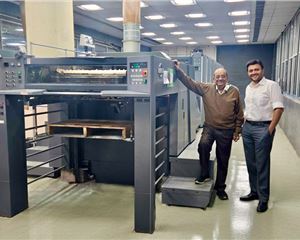
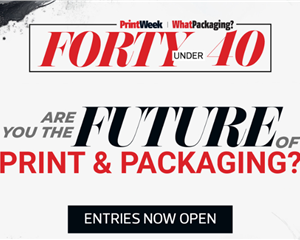
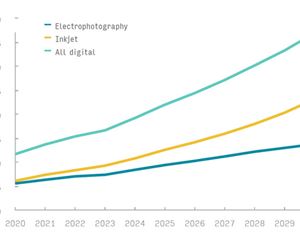
 See All
See All